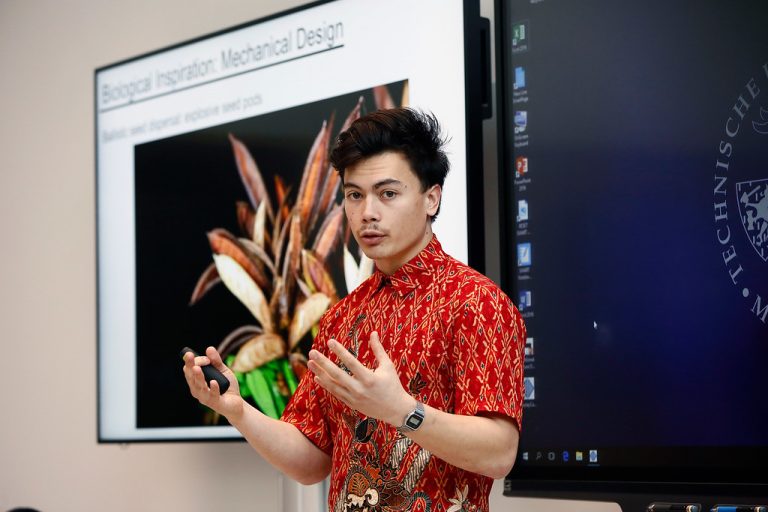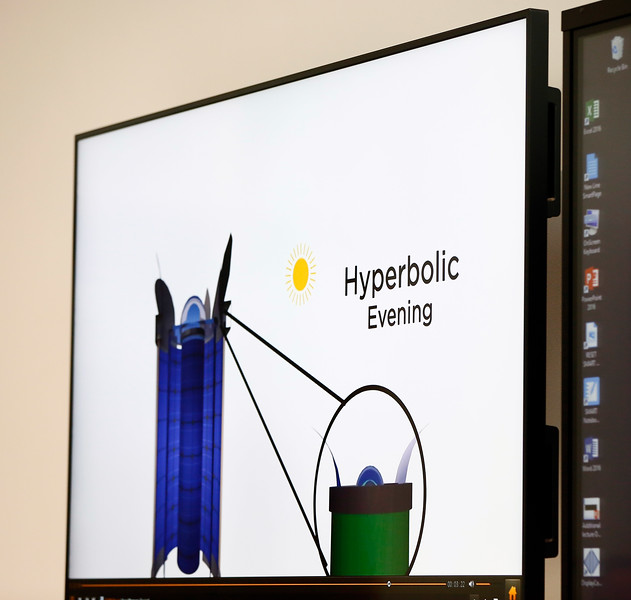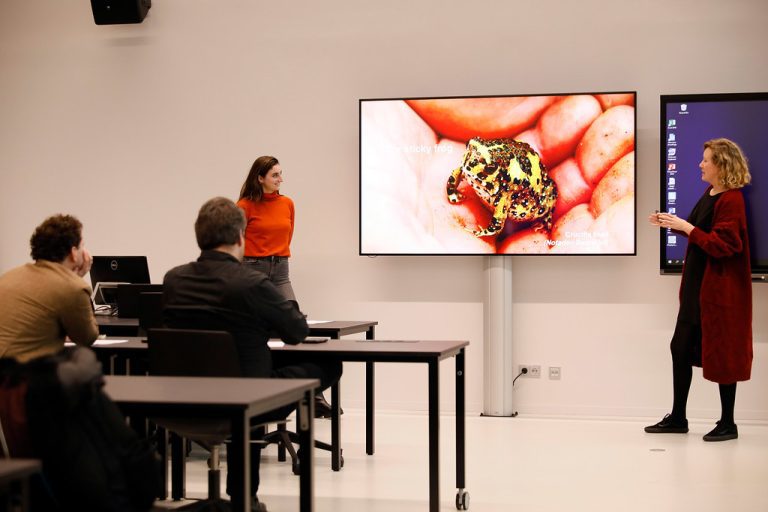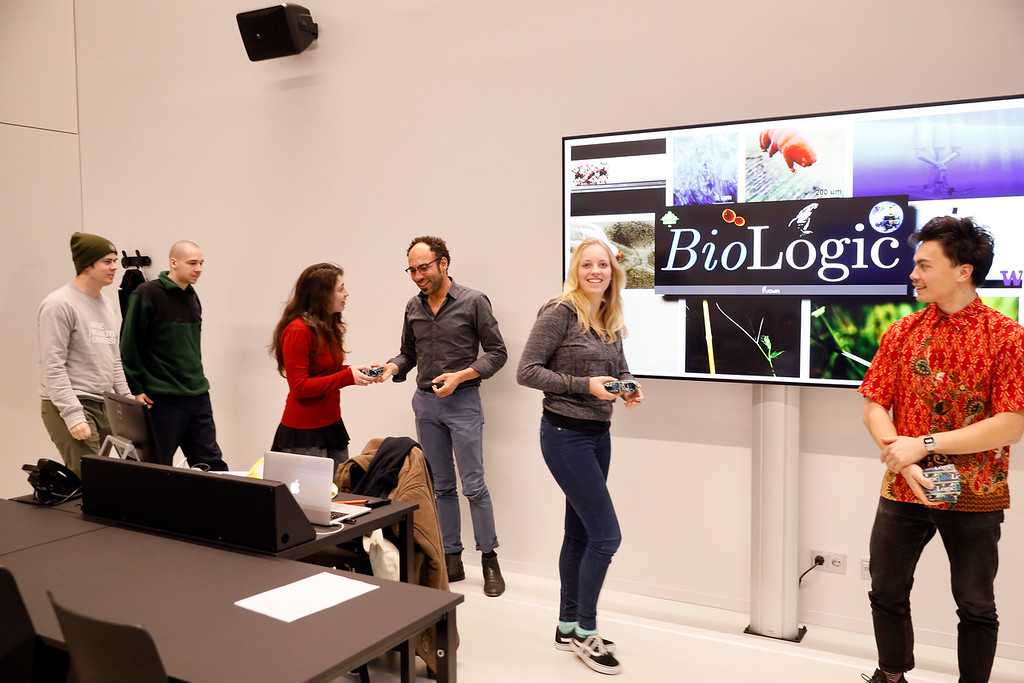Mimicking flower petals to improve photovoltaics, tackling microplastic pollution using sticky frogs; BioLogic master students presented their bio-inspired designs last week.
During a new Master course on biomimetics, students learn all about biomimicry. (Photo’s: Roy Borghouts)
Biomimicry is the imitation of systems and elements of nature for the purpose of solving complex human problems. In the BioLogic course, a new course on biomimetics, master students are introduced to this field of science. The course includes a group project where students tackle a technological problem by looking at nature. Below is a compilation of some of the projects presented.


Wildfires are on the rise worldwide. This prompted a group of students to come up with an original idea. They studied how seeds are dispersed. Some tree species use a fire triggered seed release. Several Pinus species store their seeds in cones covered with resin. When the cone is heated by a wildfire, the resin melts and loses its gluing capacity. The cone scales then bend away from the cone axis, thereby releasing the seeds.
The students came up with a device that contains a fire retardant. It consists of two flaps held under tension by resin, similar to the cone scales of Pinus. When an approaching wildfire causes the surrounding temperature to rise, the resin melts, releasing the two flaps. The flaps open up and the pressurised fire retardant is released. If these devices are placed strategically in the middle of the trees at firebreaks, they could protect villages and roads in fire prone areas from wildfires, the students envision.


Another group of students presented an innovative design to improve organic photovoltaic (OPV) efficiency. They were inspired by the light focusing strategies of flower petals. Certain shapes of flower petals optimise the specular reflection of sunlight.
Most diurnal (daytime) flowering plants have parabolic petals, whereas most nocturnal (night time) flowering plants have hyperbolic petals. The petal shapes are adapted to optimise the specular (mirror-like) reflection of sunlight. Since the angle of reflection equals the angle of sunlight incidence, a parabolic petal shape works best for diurnal flowers, which open up during the day. In contrast, nocturnal flowers adapted a hyperbolic petal shape to maximise the amount of sunlight captured when the sunlight incidence has a more inclined angle.
Similarly, the optical efficiency of OPV panels can be increased by adding petal-like structures to the outer edges. These take on hyperbolic shapes in the morning and in early afternoon, and parabolic shapes around mid afternoon.


Conventional wind turbine foundations usually consist of a monopile structure inserted deep into the ground. This method has a major drawback. The lateral forces exerted on the construction by wind cause erosion of the soil surrounding the monopile foundation, which leads to a carving effect in the ground and the dangerous tilting of the whole structure. The root system of trees shows that there may be another stronger solution.
The secondary structure of roots that is vital to the growth of trees is root hair. The RHD2 protein at their tips creates a positive feedback cycle which involves absorbing calcium ions from the soil which in turn stimulate the protein, leading to growth. On encountering an obstacle, calcium up-take is inhibited, causing the root system to ‘grow over’ the obstacle or change direction. In this process, the root inherently knows not to disturb the stability of the plant, avoiding ‘tilting’.


Microplastics are a huge ecological problem. As of yet, no real solution has been found to tackle microplastics in waste water. The sticky frog team students propose a conceptual design for a microplastics filtering system in the aeration tanks of sewage treatment plants, inspired by and based on the glue of the crucifix toad. This glue will be added to the sewage in the form of particles where it collides with the microplastic fibres and creates clusters. These clusters can be filtered out, resulting in clean water.
The crucifix toad (Notaden bennettii), which is actually a frog, is a very small animal indigenous to Australia. Its skin can exude an adhesive that is a highly elastic, tacky hydrogel which works in both dry and wet conditions. The glue successfully bonds to many materials, including plastics.
Do you have a question or comment about this article?
tomas.vandijk@tudelft.nl


Comments are closed.